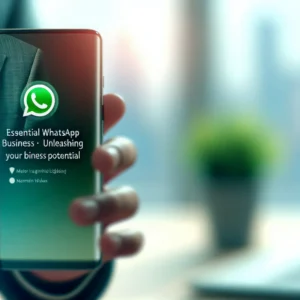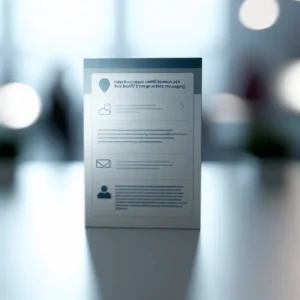In today’s fast-paced business environment, establishing a robust digital communication strategy is essential for survival. As consumer behaviors shift towards instant communication, businesses must connect effectively with customers, partners, and team members. This strategic approach not only fosters collaboration but also ensures alignment across various channels.
With stakeholders expecting real-time responses and personalized interactions, a digital communication strategy has become imperative. Leveraging integrated communication tools guarantees accurate and timely message delivery, helping you build trust and strengthen relationships with your audience.
Moreover, this strategy supports agility in modern business. Engaging customers across different platforms and adapting messaging according to demographics optimizes resources and enhances satisfaction. By investing in a digital communication strategy, you position your business competitively, offering consistent brand experiences that drive loyalty.
Understanding the Importance of a Digital Communication Strategy
A solid digital communication strategy enhances brand visibility and engagement. Consider the case of Clínica Vitalis, which realized a 25% increase in patient referrals by implementing a comprehensive communication plan that utilized email, social media, and SMS notifications. This strategy helped them resonate with a wider audience and build stronger patient relationships.
The urgency for an effective digital communication strategy has never been greater. Companies that adapt swiftly to changing consumer expectations will outperform those that delay. For instance, a local retail chain, StoreTrend, adopted an omnichannel communication strategy, resulting in a 15% increase in sales within the first quarter, as customers appreciated the seamless shopping experience. Learn more about the best tools for omnichannel customer service.
Furthermore, with tools that streamline communication, businesses can ensure a consistent brand voice. This consistency is vital; Transportadora Prime integrated various communication channels, improving their customer service response time by 40%. Their proactive engagement kept clients informed and satisfied, resulting in repeat business.
Digital Communication Strategy Benefits
Investing in digital communication tools provides valuable insights that drive future marketing efforts. By analyzing consumer engagement, you can anticipate market shifts effectively. For example, Construtora Bello used customer feedback to refine their marketing strategies, boosting their project acquisition rate by 30% in just six months. Consider utilizing a chatbot for customer service to enhance engagement.
In summary, implementing a digital communication strategy is crucial for business leaders who seek improved engagement and efficiency. By adopting an omnichannel service platform now, you ensure better collaboration across your organization and a notable increase in customer satisfaction.
Why a Digital Communication Strategy is Urgent for Your Business
The evolution of technology necessitates the urgent need for a digital communication strategy. Companies like Agência Criativa that engaged audiences through targeted social media campaigns reported a 50% increase in web traffic in less than three months. Such strategic online engagements are pivotal for building lasting consumer relationships.
Emphasizing the urgency, failing to adopt a digital communication strategy can lead to missed opportunities. Organizations that quickly implement modern tools see significant results. Loja Online DaJu transformed their operations by integrating customer service channels, improving response rates by 20% and generating higher customer satisfaction scores.
Moreover, a clear, focused communication strategy bolsters resilience against market fluctuations. For example, after adopting an omnichannel strategy, Restaurante Sabor&Co seamlessly integrated online orders with in-store experiences, resulting in a 35% growth in their customer base. Don’t forget to evaluate the tools for automated customer service.
To fully grasp the urgency of developing such a strategy, business leaders must recognize that right now is the time to adapt. The growing expectation for swift and relevant communication makes a robust strategy indispensable.
Key Components of an Effective Digital Communication Strategy
Developing a successful digital communication strategy involves key components that ensure effective customer interactions. First, understanding your audience through detailed market research allows you to tailor your messages. For instance, Clínica Vitalis used customer insights to create targeted communications, leading to a 25% increase in appointment bookings.
Next, integrating an omnichannel service platform creates a seamless communication experience. Companies like Transportadora Prime reduced operational costs by 20% after implementing an omnichannel strategy that connected chat, email, and phone support.
Setting clear and measurable goals is also crucial for your strategy’s success. With specific objectives in place, companies can track their effectiveness. The Fitness Studio Fit&Well established SMART goals, leading to a 30% increase in member retention during their promotional period.
Additionally, incorporating feedback mechanisms fosters customer engagement. By actively seeking input, brands enhance their reputation as user-centric. For example, Confeitaria Doce Sabor collected feedback through social media, directly leading to improved product offerings and a 15% increase in customer loyalty.
Integrating Technology and Training
Your team’s training ensures they can leverage modern communication tools effectively. Agência Criativa invested in regular training for their marketing team, which helped them increase campaign success rates by 40%. Empowering staff positions businesses to engage customers through current platforms successfully.
How to Build a Modern Digital Communication Strategy
To build an effective digital communication strategy, assess your current communication channels first. Companies that identify the most impactful platforms can create a cohesive plan. For example, Loja Online DaJu increased their customer engagement by 25% after linking their social media accounts with their email campaigns.
Establish clear objectives aligning with your brand’s mission. Construtora Bello set specific marketing goals, leading to a 30% rise in project inquiries after a strategic digital push. Regularly reviewing these goals enhances the relevance of your communication efforts.
Implement training programs to ensure your staff can utilize new tools effectively. When Transportadora Prime trained their team in omnichannel communication, their customer satisfaction ratings soared by 20%. Engaging with modern communication practices elevates brand interaction.
Utilizing Analytics for Improvement
Employ analytics to refine your communication strategies continually. For example, by analyzing customer data, Restaurante Sabor&Co improved their menu offerings and saw a 15% increase in dine-in traffic. Insight-driven strategies are crucial for evolving with your audience’s preferences.
Lastly, ensure flexibility in your strategy. The digital landscape shifts rapidly; businesses that adapt quickly can maintain their position. For instance, Agência Criativa effectively pivoted their content strategy in response to market trends, resulting in a 30% growth in followers within months.
Common Pitfalls to Avoid When Developing Your Digital Communication Strategy Now
When developing a digital communication strategy, be aware of common pitfalls that can undermine its success. One frequent mistake is failing to understand your audience. The Fitness Studio Fit&Well initially struggled due to vague messaging until they conducted thorough audience research, leading to a 40% increase in class participation.
Underestimating the importance of measurable goals is another common issue. Companies lacking clear objectives risk ineffective communication strategies. Ensure your goals are specific and relevant; Loja Online DaJu streamlined their goals to improve customer engagement and saw a 20% boost in conversion rates.
Overcomplicating your messaging can alienate your audience. A straightforward approach in communication fosters better understanding. The experience of Clínica Vitalis showed that clear messaging improved appointment confirmations by 25%. Keeping it simple enhances customer connection.
Channel Selection and Evaluation
Failing to select the right digital channels can also hinder your strategy. It’s crucial to focus on platforms most relevant to your audience. Transportadora Prime evaluated their communication channels and refocused efforts on social media, resulting in a 30% increase in customer inquiries.
Lastly, neglecting regular evaluations can make your strategy outdated. By consistently assessing performance metrics and adapting, companies maintain relevance. Restaurante Sabor&Co regularly solicited feedback from patrons, improving their menus based on real-time data.
The Future of Digital Communication Strategies: Trends to Watch
The landscape of digital communication is continually evolving, necessitating strategies that adapt to technological advancements and changing consumer behaviors. Agência Criativa demonstrates this by employing personalized marketing techniques, which resulted in a 50% increase in client retention.
Personalization is a growing trend. Incorporating data analytics enables targeted content delivery, as seen in Construtora Bello, which used insights to tailor their marketing messages, increasing their project inquiries by 25%. It’s important to understand the benefits of a CRM integrated with WhatsApp for personalized customer interactions.
AI and Automation in Communication
Furthermore, the integration of AI and automation in communication strategies represents a significant shift. Transportadora Prime utilized chatbot technology to enhance their customer support, leading to a 40% reduction in response time. This technology can streamline operations while maintaining a human touch in engagements.
Video communications are also on the rise. Companies leveraging video marketing strategies have seen improved engagement rates, with Restaurante Sabor&Co launching a successful video campaign that drove a 30% increase in online orders.
As data privacy concerns grow, establishing transparent communication regarding data usage is critical. Companies that prioritize security and privacy, such as Fitness Studio Fit&Well, enhance their brand’s reputation, driving customer trust and loyalty.
Conclusion: Taking Action on Your Digital Communication Strategy
In conclusion, now is the time to implement a digital communication strategy. Companies that understand their audience and utilize multiple platforms stand to gain significantly in customer engagement and satisfaction. Businesses are competing in a technology-driven landscape.
Investing in an omnichannel service platform, like the one offered by Nexloo, ensures seamless interactions across various touchpoints. This approach leads to a holistic understanding of customer needs, enhancing your ability to deliver tailored messaging effectively.
Your immediate action is crucial. By prioritizing a well-defined digital communication strategy now, you can elevate your communication efforts and position your brand for future success in a rapidly changing marketplace.









